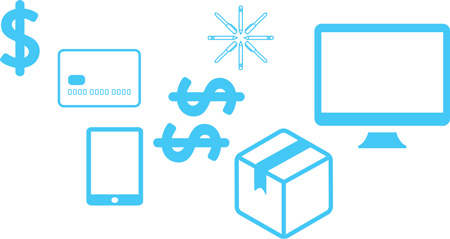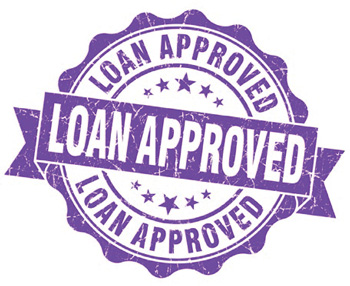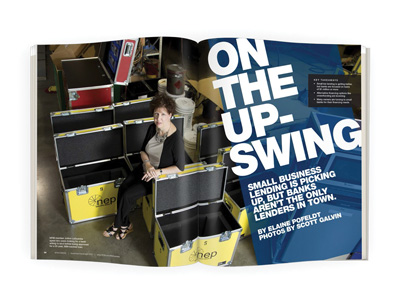
HOW TO GET THE CAPITAL YOUR BUSINESS NEEDS WITH OR WITHOUT A BANK
OVERVIEW
1. Small Business Lenders Ready to Mobilize
2. What Kind of Loan Do You Need?
3. Beyond the Bank: Alternative Lenders
4. Checklist: What You Need to Get Approved
5. Borrower Profile: LM Cases Inc.
6. Resources for Borrowers
1. SMALL BUSINESS LENDERS READY TO MOBILIZE
Small businesses need fuel to flourish - financial fuel, that is. Without it, they thirst for the resources required to survive and thrive, including employees, vendors, real estate, inventory, raw materials and equipment.
Fortunately, lenders have plenty of fuel to go around, according to the Federal Deposit Insurance Corp. (FDIC). The FDIC reported in early 2015 that U.S. banks earned $152.7 billion in 2014. That’s more than 3 percent more than banks earned in 2006 when bank earnings hit their prerecession peak of $148 billion.
Their strong position means more banks are lending more money. In fact, the FDIC noted that loan and lease balances increased 5.3 percent in 2014 which is the highest 12 month growth rate for loans since mid-2008.
“Almost half of small business owners bank at a large bank, and large banks have a lot of money to lend right now,” says NFIB Director of Research and Policy Analysis Holly Wade. Despite strong conditions, many small business owners remain reluctant to ask for loans.
“Small business owners are hesitant to borrow because they’re still uncertain about the economy going forward,” Wade says. “Once there’s more stability in the recovery, however, they’ll start to borrow again in order to improve and expand their business.”
NFIB’s April 2015 Small Business Economic Trends report found that only 4 percent of small business owners felt their borrowing needs had not been met. Thirty-one percent said all their borrowing needs had been satisfied, and more than half (53 percent) said they didn’t want a loan at all.
The capital is available - not only from traditional sources, like national and regional banks, but also from non-traditional sources, like online and institutional lenders, according to Ro-hit Arora, CEO of Biz2Credit, an online market place connecting small business borrowers and lenders.
“A lot of small business owners have started looking for credit, like everything else, online,” Arora says. “That has been a big disruption for the market. As a result, over the last 12 to 18 months we’ve seen alternative and institutional lending becoming more mainstream which is a positive development.”
Wherever small businesses seek financing, competition among borrowers will likely increase as the economy improves. Whether you’re first in line at the bank or last, NFIB’s Small Business Guide to Getting a Loan will position your business to claim its share of capital.
Visit NFIB.com/Research for the latest news on the small business economy.

2. WHAT KIND OF LOAN DO YOU NEED?
Whether you need a loan, and what kind, depends on what your goals are for your business. Understanding the amount you need and how it’s going to be used
determines which type of funding you seek.
Small businesses seeking conventional loans typically have three options:
A. Business line of credit
“A revolving line of credit is used to make up for a short term capital needs due to a mismatch of receivables and payables,” says Jay Des Marteau, head of small business banking at TD Bank in Cherry Hill, New Jersey. A revolving line of credit, which works like a credit card, is ideal for covering near term expenses like payroll and inventory until your customers pay you, he adds.
B. Term loans
“Term loans are generally used for capital expenditures,” says Des Marteau. These loans, which are for set amounts that are repaid according to a fixed schedule, are ideal for significant purchases, he says, like real estate, software, vehicles or equipment.
C. SBA loans
SBA loans are government backed loans for businesses that are denied a conventional bank loan. “You can get a term loan all the way up to $5 million or a line of credit for smaller dollar amounts,” Des Marteau says.
Conventional bank lenders have stricter lending criteria, lower approval rates and longer, more thorough application processes than alternative lenders. But conventional loans also have advantages, such as lower interest rates, single instead of double digit APRs, and longer repayment periods.
3. BEYOND THE BANK: ALTERNATIVE LENDERS
Many businesses could benefit from non-bank financing. Options include:

4. CHECKLIST: WHAT YOU NEED TO GET APPROVED
Although businesses courting alternative lenders typically face less stringent requirements, those seeking a traditional bank loan should have the following items prepared:

5. BORROWER PROFILE: LM CASES INC.
In her line of work, which is manufacturing, banks are just as important as equipment, says NFIB member JoAnn LaGuardia, president and CFO of LM Cases Inc., a Youngstown, Ohio based maker of reusable shipping cases. LaGuardia and her husband are also members of the NFIB Leadership Council in Ohio.
“In manufacturing, we always need capital. That’s the nature of our business,” says LaGuardia, who has a $100,000 bank line of credit that she uses for working capital when she needs it. “We have to stay current with our vendors, collect money from our customers and, in between, figure out how we’re going to make payroll. It’s a delicate balancing act of cash flow, and bank financing helps.”

As helpful as it is, it isn’t always easy to come by, says LaGuardia, who spent two years looking for a lender for her most recent loan: a 25 year SBA backed loan from KeyBank that she used to refinance her 44,000 square-foot facility.
“I can’t tell you how many banks I interviewed,” LaGuardia says. “Bank lending at that time was practically nonexistent.”
What finally helped her qualify was her meticulous record keeping. “You need to have all your financials in order,” LaGuardia says. “My background is accounting, so when a bank tells me it needs three years of financial statements, three years of tax returns, a current accounts receivable report, a current accounts payable report, an interim financial statement, three years of personal financial statements and three years of personal tax returns - I know the drill. I have all those things saved as PDFs on my computer, so all I have to do is click and send.”
6. RESOURCES FOR BORROWERS
BANKS
|
ALTERNATIVE FINANCING
|
.
BIG SAVINGS
NFIB members can save thousands of dollars a year on exclusive deals with our trusted affinity partners. Visit NFIB.com/MemberVantage for more details.
Visit NFIB.com/LoanHelp for more resources for your business:
Disclaimer: This publication is not designed as a substitute for professional advice. Rather, it is designed to help inform persons about the basics of financing. Future trends in financing cannot be predicted, and statements in this publication are based solely on the financing climate on the date of publication. It is wise to consult with your financial adviser for assistance in proper financing practices for your individual situation.